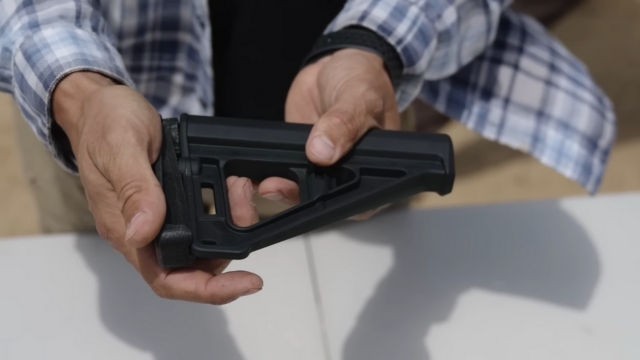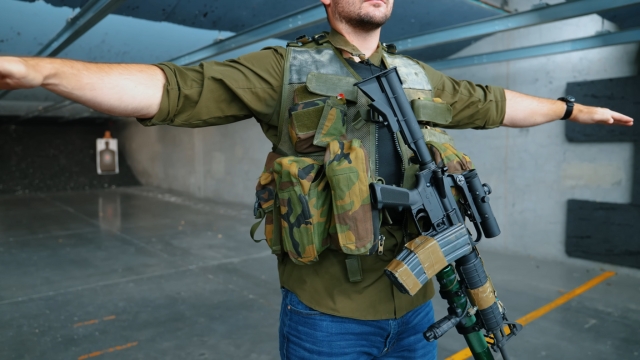In 2025, gun ownership laws around the world, and especially in the United States, have reached a new level of complexity. While the right to bear arms remains constitutionally protected in many jurisdictions, the accessories that modify or enhance firearms are tightly regulated, often falling into legal gray zones that can confuse even responsible owners.
The difference between a legal upgrade and a federal offense can come down to a few millimeters of barrel length, a detachable stock, or a “readily convertible” feature.
The concrete reality is this: you can legally own most accessories that improve safety, handling, or protection, but any modification that increases concealability, firing rate, or destructive potential is heavily restricted.
Federal agencies like the Bureau of Alcohol, Tobacco, Firearms, and Explosives (ATF) have spent the past few years redefining what qualifies as a firearm component, what counts as an accessory, and what constitutes an illegal conversion device.
This guide breaks down the most common accessories, what’s legal, what’s restricted, and what’s completely banned, based on the latest 2025 laws and ATF interpretations.
Legal Accessories That Improve Safety and Performance
Accessories designed to make shooting safer, more accurate, or more comfortable are generally legal across most U.S. states and many other developed jurisdictions. These include sights, optics, grips, bipods, flashlights, and upgraded magazines that stay within regulated capacity limits.
For example, reflex and red dot sights are universally allowed. They improve target acquisition and reduce strain during practice or competition shooting.
Upgraded triggers are also typically permitted, as long as they don’t convert a semi-automatic weapon into a fully automatic one. Suppressors (silencers) remain legal in many U.S. states but require federal registration under the National Firearms Act (NFA) and a tax stamp.
| Accessory Type | Legal Status (U.S.) | Key Regulation | Purpose |
| Optics / Sights | Legal nationwide | None (non-restrictive) | Improves accuracy and vision |
| Grip / Stock upgrades | Legal (state-dependent) | Illegal only if used for concealment | Enhances handling and stability |
| Bipods / Mounts | Fully legal | None | Increases precision for long-range shooting |
| Suppressors | Legal in 42 states | NFA Tax Stamp required | Reduces noise, preserves hearing |
| Magazines | Legal up to 10–15 rounds in most states | Varies by state (e.g., CA, NY, NJ restrict capacity) | Extended capacity for sports shooting |
Restricted or Controlled Accessories

Certain gun components and add-ons fall into a restricted category, meaning they can only be owned under specific conditions, permits, or tax registrations. The key examples include short-barreled rifles (SBRs), pistol braces, and automatic conversion kits.
In 2023, the ATF reclassified stabilizing braces (originally designed for disabled shooters) as potential short-barreled rifle components, requiring registration under the NFA. The same applies to barrels under 16 inches, which transform a rifle into an SBR if not properly registered.
Automatic conversion devices, such as “switches” that turn a semi-automatic pistol into a machine gun, are fully illegal under federal law. Even possession of one, without it being installed, can result in severe felony charges.
| Accessory Type | Legal Status | Governing Law | Explanation |
| Pistol Braces | Restricted | ATF Rule 2023R-08F | Requires registration as an SBR |
| Short-Barreled Rifles (SBR) | Legal with NFA tax stamp | NFA §5845 | Barrel <16 inches, must be registered |
| Full-Auto Conversion Switch | Illegal | National Firearms Act (NFA) / Gun Control Act (GCA) | Converts to automatic, banned for civilians |
| Binary Triggers | Legal in some states | State firearms laws | Fires one round per pull and release |
| Bump Stocks | Federally banned (2019) | ATF Ruling 2019-01 | Classified as machine guns |
These restrictions highlight the fine legal distinctions that exist in firearm customization. A device that increases the rate of fire or reduces the length of concealment can immediately move a gun from legal to illegal status.
Legal Protective Gear and Ballistic Equipment

Beyond firearms themselves, ballistic protection equipment has grown in popularity among both professionals and civilians. Body armor remains largely legal for private ownership in most U.S. states, provided it’s not used during the commission of a crime.
This includes level 4 plates, the highest-rated form of body armor available to civilians, capable of stopping armor-piercing rifle rounds. Level 4 plates are typically made from advanced ceramics or polyethylene composites and are used by law enforcement, security professionals, and private citizens seeking maximum protection.
Under federal law, it is legal to buy, own, and wear body armor in 49 states. However, convicted felons are prohibited from possessing it. Some states, like New York and Connecticut, have implemented additional restrictions, requiring in-person sales or background checks.
| Protective Gear | Civilian Legal Status (U.S.) | Notes |
| Level IIIA Soft Armor | Fully legal | Protects against handgun rounds |
| Level III Plates | Fully legal | Stops rifle rounds up to 7.62mm |
| Level IV Plates | Legal in most states | Stops AP (armor-piercing) rounds |
| Tactical Vests / Carriers | Fully legal | Considered clothing, not a weapon |
| Ballistic Helmets | Legal | Not classified as a firearm accessory |
Body armor ownership laws reflect a growing trend toward personal security. The legality is rooted in the idea that protection, unlike aggression, is a fundamental right, as long as it’s used responsibly.
Completely Illegal Accessories
View this post on Instagram
While innovation in firearms technology has advanced rapidly, certain items are outright illegal for civilian use under federal and international law. These include sawed-off shotguns, suppressors without NFA registration, explosive projectiles, and any “destructive device” that meets the definition of a weapon designed to cause mass harm.
Laser modules that can blind, thermal imaging systems used for night targeting in hunting, and grenade launcher attachments are also banned or tightly controlled.
Importantly, “ghost gun” kits, which allow users to assemble firearms without serial numbers, are now regulated under the 2022 ATF “Frame or Receiver” rule, requiring serialization and background checks.
| Accessory Type | Status | Legal Basis | Description |
| Fully Automatic Conversion Devices | Illegal | NFA & GCA | Civilian ownership banned |
| Explosive Ammunition / Tracers | Illegal in most states | Federal Explosives Law | Classified as destructive devices |
| Grenade Launchers | Illegal | NFA §5845(f) | Destructive device classification |
| Sawed-Off Shotguns | Illegal | NFA §5845(d) | Barrel length <18 inches |
| Ghost Gun Kits (unserialized) | Illegal | ATF 2022 Final Rule | Must include serial numbers and a background check |
The International Perspective
Outside the United States, most nations enforce far stricter regulations. In the European Union, for instance, accessories that modify firearm function, such as high-capacity magazines or adjustable stocks, are often restricted to military or law enforcement use only.
In Canada, suppressors are banned, and magazine capacities are limited to five rounds for most rifles and ten for handguns.
In Asia and the Middle East, laws vary dramatically: Israel allows limited private ownership with strict licensing, while Japan, Singapore, and China prohibit virtually all civilian gun accessories outright.
Responsible Ownership in 2025
@brandoncole22Be a responsible firearm owner.♬ original sound – ReelSouth_Outdoors
The takeaway for 2025 gun owners is that legality is often less about the accessory itself and more about intent, configuration, and compliance. Federal and state laws can overlap or contradict each other, meaning an accessory that’s perfectly legal in one jurisdiction might be banned in another.
Responsible owners now approach customization with the same care they use for firearm handling, verifying every part, keeping documentation, and staying updated with ATF rulings. The modern gun community places equal emphasis on safety, accountability, and education.
Conclusion
In the modern firearm landscape, accessories blur the line between innovation and illegality. Optics, grips, and ballistic protection like level 4 plates represent responsible ownership, improvements that enhance safety and survivability.
In contrast, conversion devices and restricted configurations cross into dangerous legal territory. Even minor unauthorized modifications can leave microscopic forensic evidence that links a weapon to both the owner and its usage beyond legal parameters.
Understanding these distinctions is essential for every gun owner in 2025. The future of firearm rights depends not only on political debates but on how responsibly individuals handle the freedoms they already have.
By respecting regulations, prioritizing safety, and avoiding prohibited devices, gun owners can ensure that innovation continues to serve lawful, ethical purposes, not risk becoming its own worst enemy.

